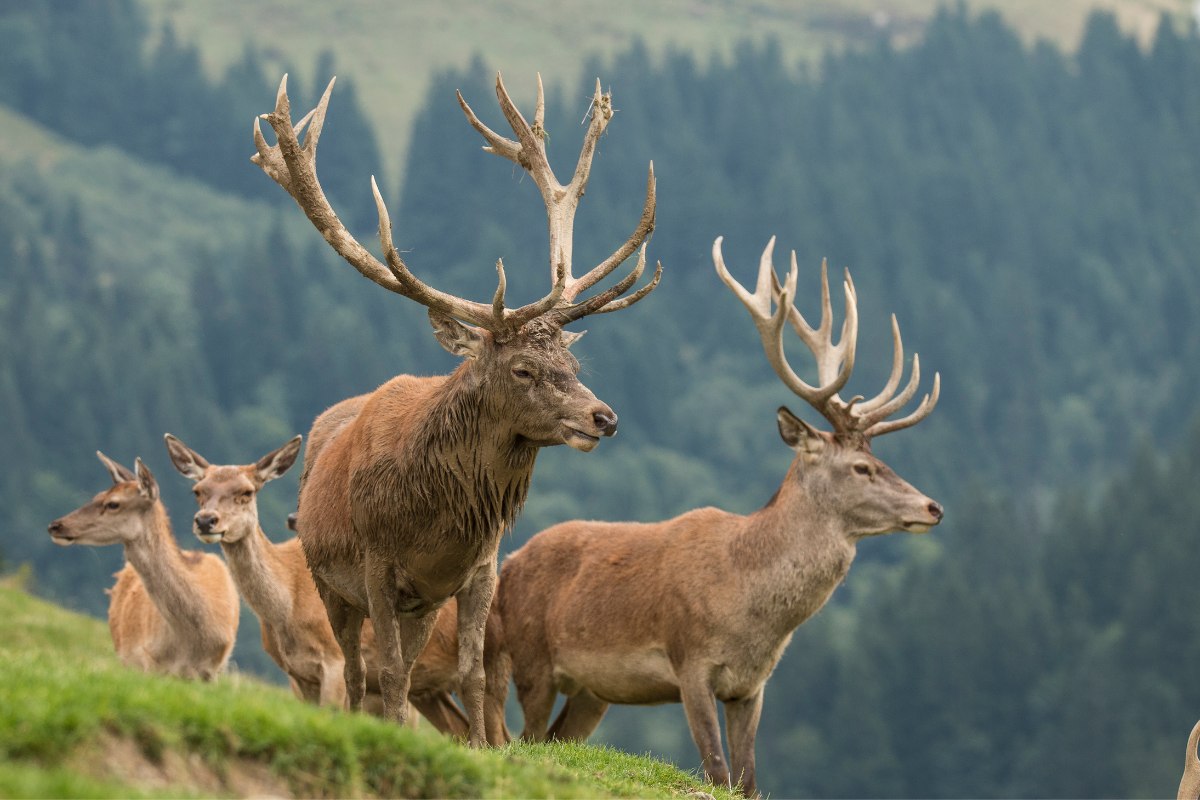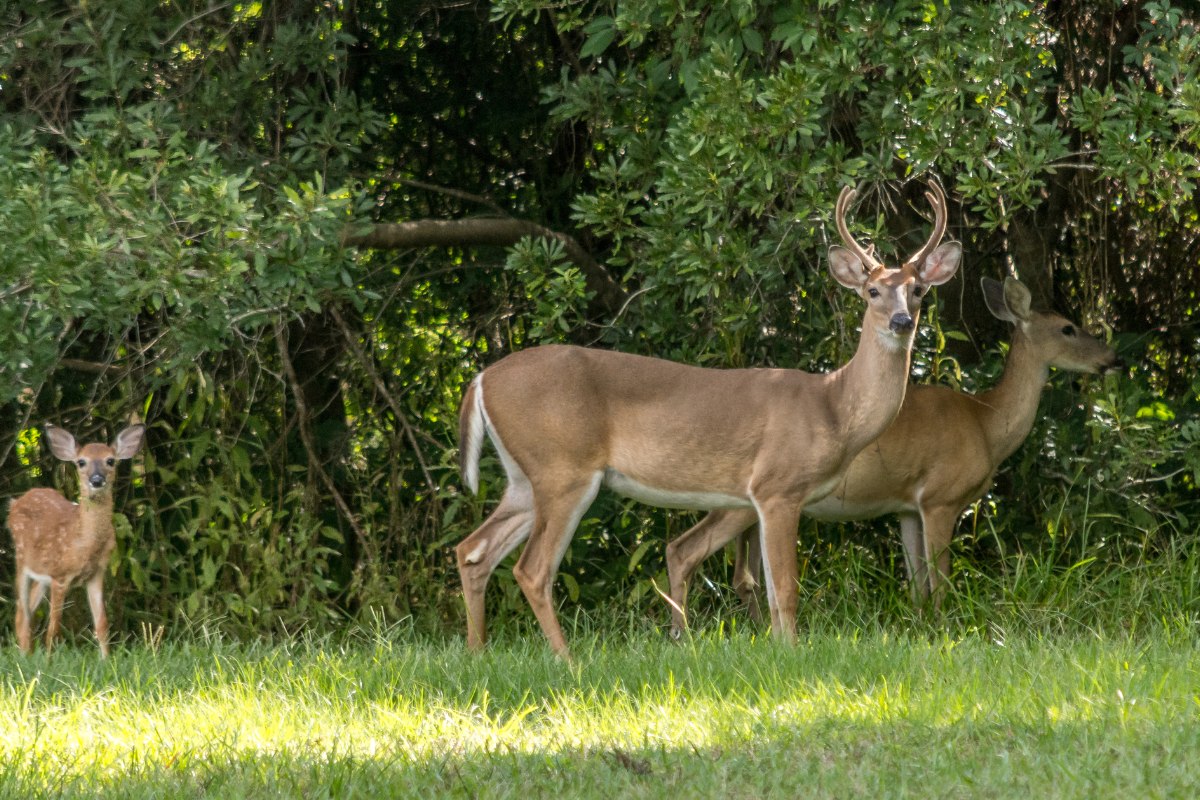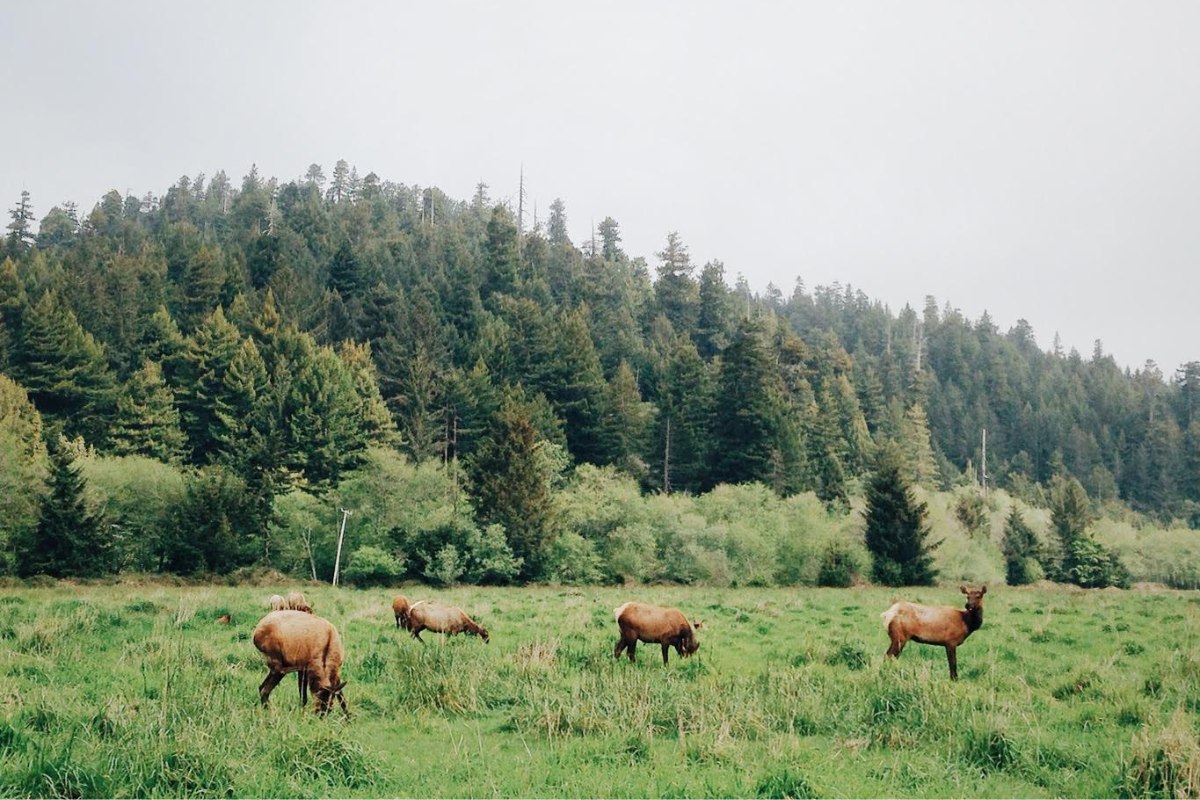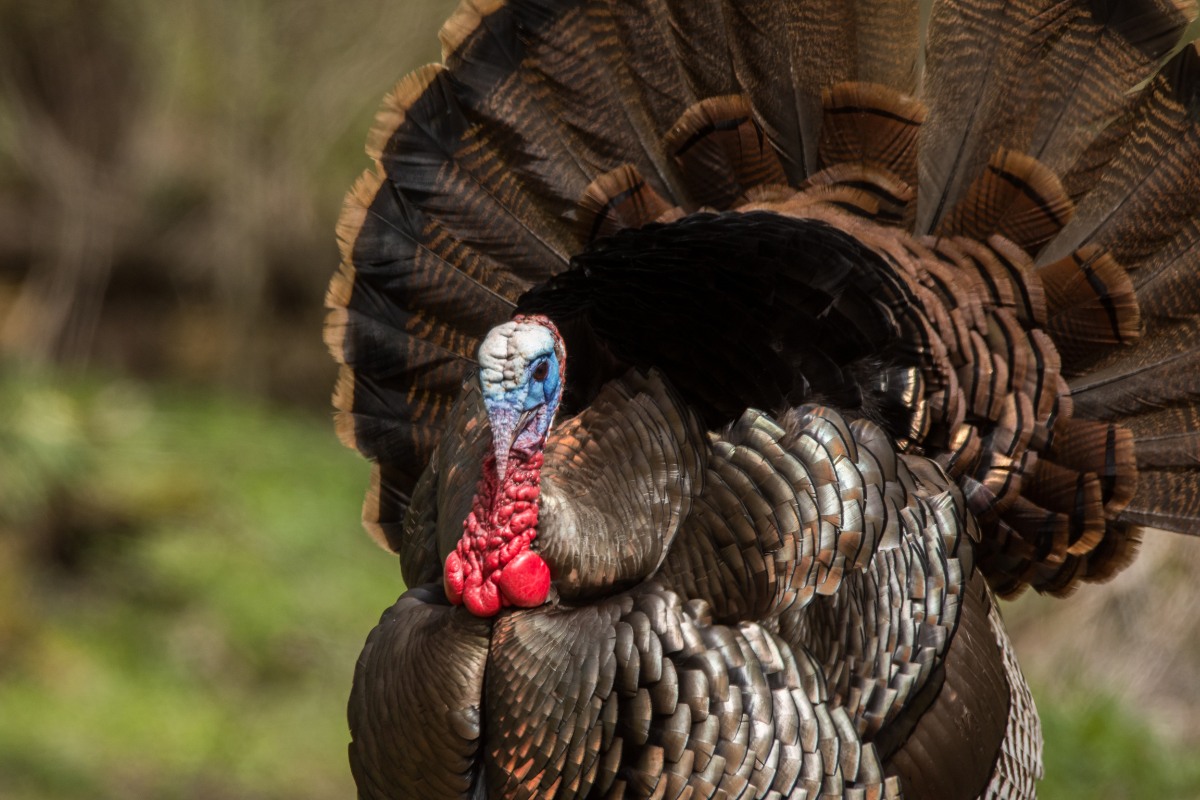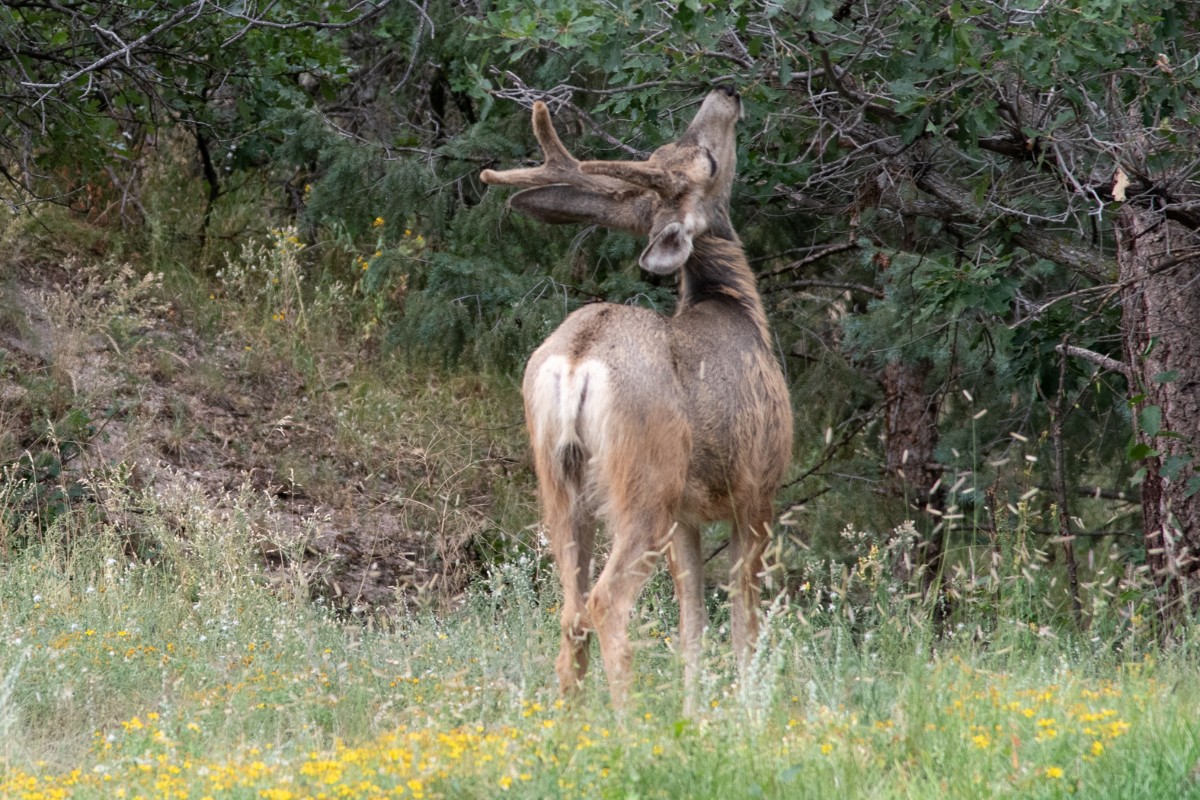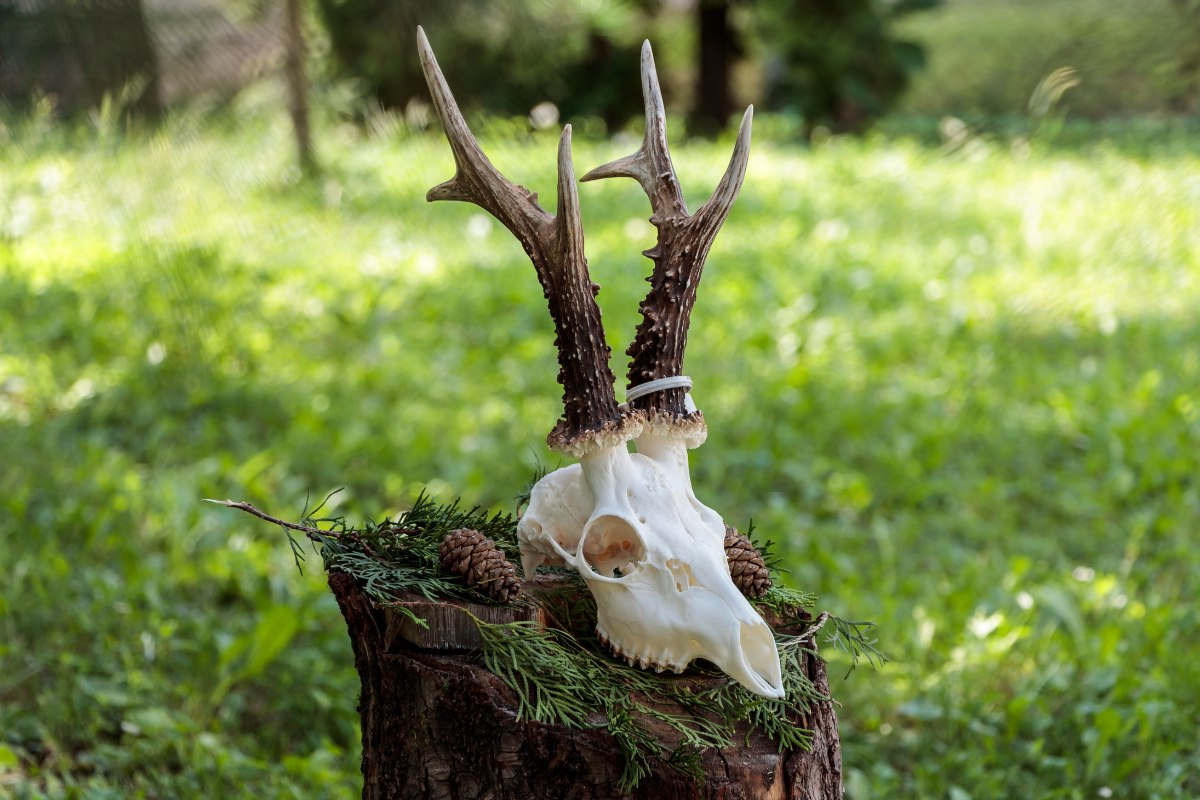Telling the age of a whitetail deer is a very important skill, for all of those obsessed with whitetails, to have in their arsenal if they are interested in allowing a buck to reach his full genetic potential, in other words, get older and with a bigger rack. State game officials are interested in the age of harvested animals to achieve a better understanding of population health and the dynamics within a particular herd. Private game managers, such as those on large ranches, are usually very particular about what age classes are present on their property, as, in general, older bucks equal bigger bucks with those bigger racks. Wildlife biologists study how a whitetail’s behavior, dietary needs, reproduction capabilities, and pretty much everything else, change over the course of their life.
What about John Q. Hunter? Why should we be so interested in how old a buck is? Well, in point to fact, for the very same reasons as those mentioned above. We are on the front lines of game management in our own small corner of the woods. Who knows when the deer have made the switch from agricultural crops to acorns? Who knows when the rut hits its peak on your farm? Who can best tell when there is an age class discrepancy within the herd after spending season after season watching young/small bucks and does go by and very few if any mature bucks materializing? It’s us! Hunters, especially those who have traditional “stomping grounds” can get a feeling of how well their season will be and how healthy the deer herd is, long before opening day.
Importance of Age Class Distribution
Let’s first look at the importance of age class distribution when “managing” for quantity of deer in your area. Maximizing the number of deer found in an area is heavily dependent on the area’s carrying capacity or its habitat suitability and availability, food sources, and water sources. Since mature does usually give birth to twins or even triplets when conditions are favorable, having a deer herd where the majority of does are over 2 1/2 years old allows for the potential for numbers to grow. But keep in mind that high numbers of deer deplete resources and stress the animals of the herd. So if you are managing for numbers, your harvest plan may change each season to keep the desired numbers of animals without exceeding the carry capacity of your area. An age class inventory of the does and bucks in your area can indicate if the conditions are right for increasing or decreasing your deer herd.
Trail camera surveys and keeping an accurate harvest record are also great tools for determining population indicators such as sex ratios, herd numbers, and age classes. Harvest age ratios provide insight into the survival rates of bucks. For example, if 80% of the bucks harvested from your farm or area were under an age of 2 1/2 years then the survival rate of 2 1/2 years is only about 20%. Therefore, being more selective and harvesting only older, more mature animals will increase the survival rates of your younger bucks and allow more to reach maturity. After all, you can’t have big bucks if you kill the young ones.
How to Determine the Age of a Deer
Whitetail does typically give birth to their fawns sometime between late May and early June and aren’t harvested until fall. Therefore, the age at harvest is measured in half years, such as 1 1/2, 2 1/2, 3 1/2, and so on. There are several means of estimating a deer’s age, some while he’s still on the hoof.
Antlers
Antlers generally increase with age, provided that ample nutrition is available. Ultimate spread, mass, tine and beam length will be dependent on the genetics of the individual buck. It is possible that with a large nutritional resource and good genetics, a 2 1/2 year old buck could have a larger rack than a 5 1/2 year old who had less nutrition or poorer genetics. A buck’s rack will also peak around the age of 6 1/2 years and begin to decline thereafter.
Using the position of the tip of the main beam of a buck’s antler can indicate his age. For example, although many yearling bucks may only sport spikes or a single fork, even the higher-end bucks will have a main beam that seldom extends past the eye. A 2 1/2 yr old’s beams typically extend to or just past the end of the eye. A 3 1/2 yr old’s beam usually ends somewhere between the eye and the tip of the nose. While 4 1/2 yr old and older bucks’ main beams extend to the end of the nose or beyond. It is possible to become so familiar with a deer herd that one can be successful at guessing a deer’s age by its rack. But there are so many variables that come into play when it comes to antler size that using them alone to judge a deer’s age is an estimation at best.
Body Confirmation
Body confirmation is another and a better way to help determine the age of a buck on the hoof. Younger bucks (2 1/2 years or less) will have a slightly more narrow head and appear leaner in the body. The shoulders and hind legs will have less muscle formation and the abdomen will appear to turn up into the pelvis or be parallel to the ground. Think of these deer as the teenagers of the deer herd. When a deer reaches 3 1/2 years old, he is first starting to show the signs of maturity. He begins to bulk up in muscle formation especially in the neck and shoulder areas. Their abdomens begin to lower but are still roughly parallel to the ground and their “faces” are more broad and longer. At 4 1/2 years old, the deer is nearly fully mature and is in what could be considered the prime of his life. His muscle formations are nearly maxed out and his abdomen has a slight sag. The “Roman Nose” feature may begin to appear. This is when the bridge of their face between their eyes and snout becomes slightly raised and rounded. This may be as much of a genetic trait as it is a maturity development as older bucks could be both with and without it. Finally, deer 5 1/2 years old are fully mature and at their peak of dominance. These guys are a force to reckon with if you’re another buck in their neighborhood. The deer’s abdomen or gut, now has a pronounced sag.
Experience and opportunities to observe bucks from all different age classes are the best way to learn how to make the best estimate of a buck’s age while he is still on the hoof. However most hunters catch a glimpse of a buck older than 3 1/2 years, maybe only a few times each year. So obtaining enough repetition can be very difficult. You can find images on the web posted by game managers or study groups or contact your local DNR office. Odds are they will most likely have images of the same value and from the deer herd in your state. Therefore, you won’t be hunting in Maryland and using age class images from Iowa.
Teeth
Teeth from harvested deer are the best tool for accurately determining the age of the deceased animal. This process takes some skill and training. Here are some of the basic principles. A deer’s tooth wear and replacement of its premolars and molars on the lower jaw is generally consistent across the country and through the ages. Luckily, here is a greatly detailed report describing the exact process for aging deer in this way at the Texas Parks and Wildlife Department.
To paraphrase this report, you want to identify the number of teeth present and the wear upon each tooth and/or tooth part. The tooth parts are:
- Cusp: a point or projection on a tooth
- Back Cusp: the very back cusp on tooth 6 on the cheek side of the jaw
- Lingual Crest: tooth ridge adjacent to the tongue
- Enamel: hard, white outer coating of a tooth
- Dentine: soft inner core of a tooth (dark brown in color)
- Infundibulum: crescent-shaped depression in the central crown of a tooth between the enamel ridge or crest
Fawns
Fawns have 5 or less teeth and 3 cusps on the third premolar (3rd tooth from the front). Sometimes in late dropped fawns, the 5th tooth hasn’t erupted yet.
1 1/2 Years Old
The third premolar still has 3 cusps that shows heavy wear and the 6th tooth has erupted and is just visible above the gumline.
2 1/2 Years Old
Lingual crests on all molars are sharp and pointed. The third premolar now has only 2 cusps and the back cusp of the last molar is sharp and pointed. Here is where it can get tricky to the novice. From here on out, you start to compare enamel and dentine on each tooth. At this age, the enamel is wider than the dentine on all three molars (teeth 4,5, and 6th from the front).
3 1/2 Years Old
You want to look at tooth 4 and 6 at this age. The lingual crest of tooth 4 has become blunt and the dentine is as wide if not wider than the enamel. The back cusp of tooth 6 is forming concavity.
4 1/2 years Old
The lingual crest on tooth 4 is nearly rounded off and it has become blunt on tooth 5. The dentine in tooth 4 is twice as wide as the enamel and wider than the enamel in tooth 5. The back cusp of tooth 6 has been worn to the point that it now slopes downward toward the cheek.
5 1/2 Years Old
The lingual crest is worn away on tooth 4, rounded on tooth 5, and blunt on tooth 6. The dentine in tooth 6 is now wider than the enamel.
The report continues through age 8 1/2 years, but since the majority of bucks hunted on the average farm or public land rarely live beyond 5 1/2 years, we will stop here. The state of Texas is considered by many to be the grandfather of whitetail deer management and it is the first choice as a resource on this matter.
A “trophy” determined by rack size is relevant to the region where you may be hunting, but harvesting a mature deer over the age 3 1/2 years is a trophy anywhere in the whitetail’s range. For most of us, we will never be sitting on thousands of acres of private, highly managed hunting land with the luxury of passing on 140″ 4 1/2 year olds for a chance at a booner a year older in age. Therefore, hunting free-range whitetails and selecting only mature deer for harvest will require cooperation from the neighbors as well, to achieve a healthier well aged deer herd with older bucks. Given a mature buck’s home range may vary from a 100 acres to over a square mile, and the distances in which a rutting buck is willing to travel for a ready doe, getting cooperation from enough neighbors to see a significant improvement will be tough to say the least. But it is this humble hunter’s opinion that it is something for which we should strive.
After all, this is not meant to be a spark into the whole meat vs trophy hunter debate. But rather just something to ignite your curiosity so the next time a young 8pt steps out and before you pull the trigger or touch your release, you may wonder how old is he? How much bigger might he become? Let your curiosity get the better of you and let that young buck fulfill the genetic potential with which he was born.
Good luck and good hunting!
